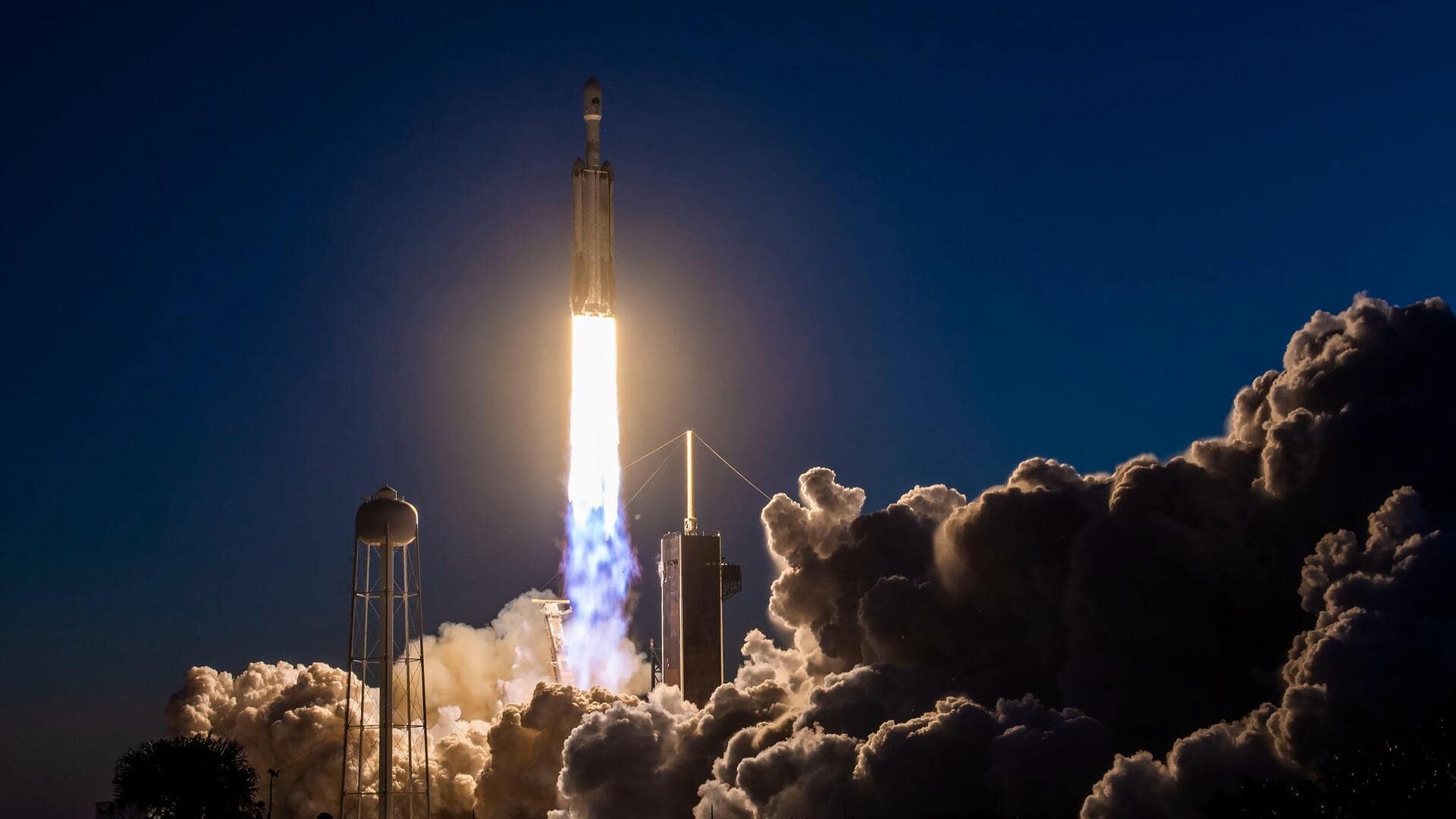
SpaceX launches Jupiter 3, world's largest communication satellite
What's the story
SpaceX has successfully launched the Jupiter 3 satellite aboard a Falcon Heavy rocket. Once completely deployed, it will be the world's largest commercial communications satellite, per its operator Hughes Network Systems. The satellite, which has been developed by Colorado-based Maxar Technologies, will join the Hughes Jupiter satellite constellation currently in orbit. The mission took off from NASA's Kennedy Space Center in Florida.
Context
Why does this story matter?
This is the 51st launch for SpaceX this year. The company hit a major launch milestone yesterday after it sent 22 of its Starlink satellites to orbit. Today's launch comes after two failed attempts, that took place on July 26 and 27, respectively. The originally scheduled launch on Wednesday was called off under a minute for liftoff.
Detail
The communication satellite will have a long wingspan
Jupiter 3 will be positioned in the geostationary orbit, 35,700km above Earth. It will double the existing data rate capabilities of the Hughes Jupiter satellite constellation, which currently provides broadband internet services to North and South America. Once Jupiter 3 is fully deployed in orbit, it will have a wingspan akin to that of a passenger aircraft, which ranges between 130-160 feet.
Jupiter 3
Jupiter 3 is Maxar's largest satellite
Jupiter 3 is the largest satellite that Maxar has built. It carries improved technological architecture that has allowed for the miniaturization of the satellite's electronics, solid-state amplifiers, and a more efficient antenna design, says Maxar in a blog post. Jupiter 3 will provide in-flight Wi-Fi and low-latency internet plans to strengthen home Wi-Fi usage with other wireless technologies.
Deployed
Maxar has over 285 satellites in orbit
Weighing about 10.1 tons, Jupiter 3 is heavier than any payload that has ever been sent to the geostationary orbit. The satellite is planned to be deployed about 3.5 hours from the time of launch. Maxar designs and manufactures communication and Earth-observing satellites as well as spacecraft components. The company has more than 285 satellites in orbit, per the official blog.
Rocket
Falcon Heavy's side boosters returned to Earth
Today was the seventh launch of the Falcon Heavy triple-booster rocket. After first-stage separation, SpaceX disposed of the rocket's core booster in the Atlantic Ocean. Meanwhile, about nine minutes from the time of launch, Falcon Heavy's two side boosters performed boost-back burns and returned to Earth with a touchdown at SpaceX's Landing Zones 1 and 2 at Cape Canaveral.